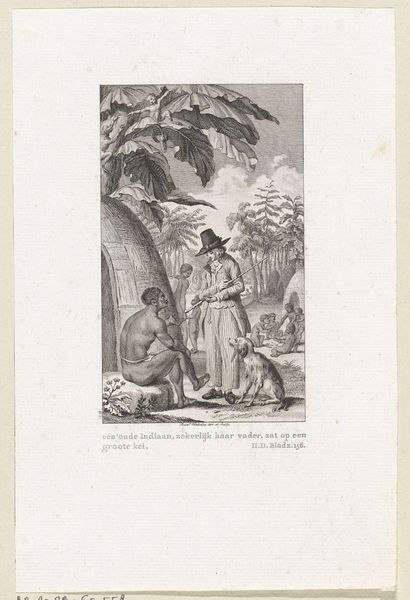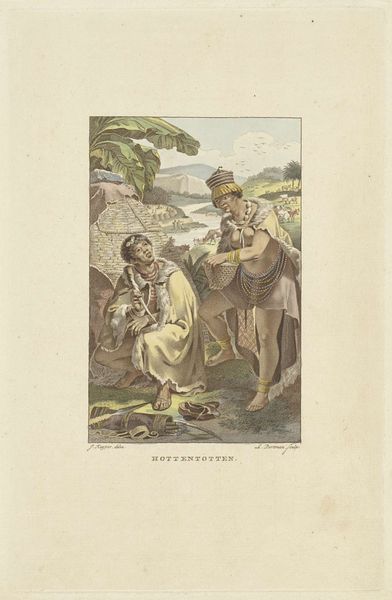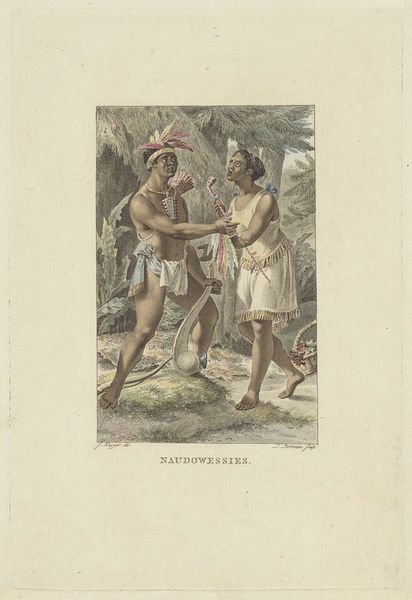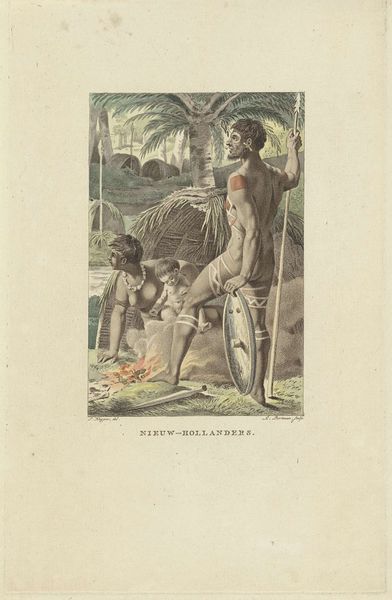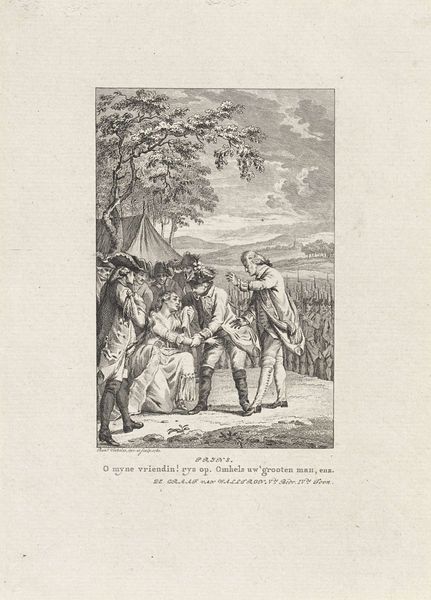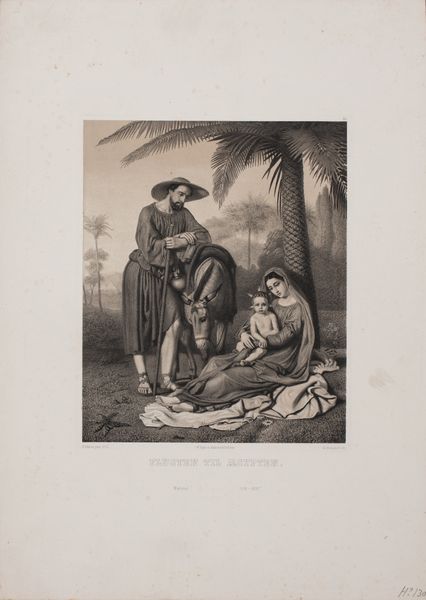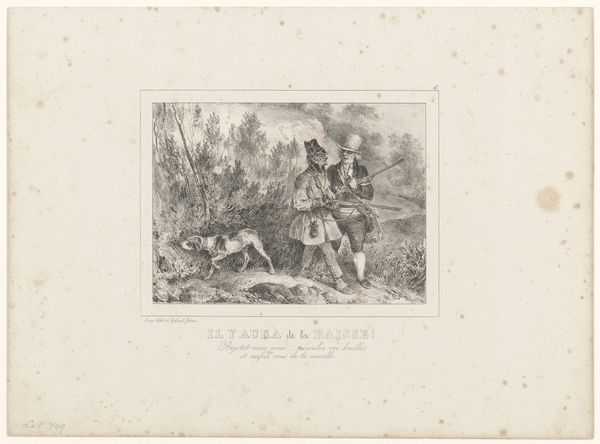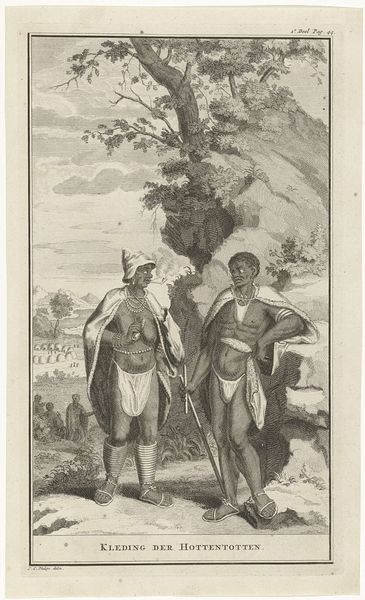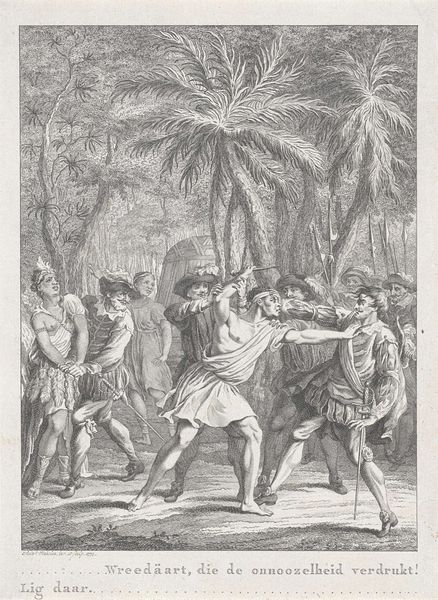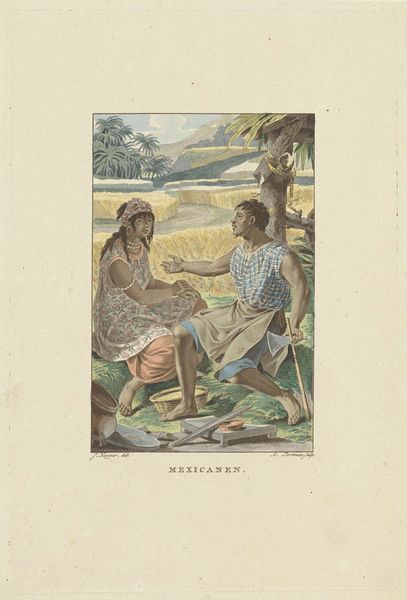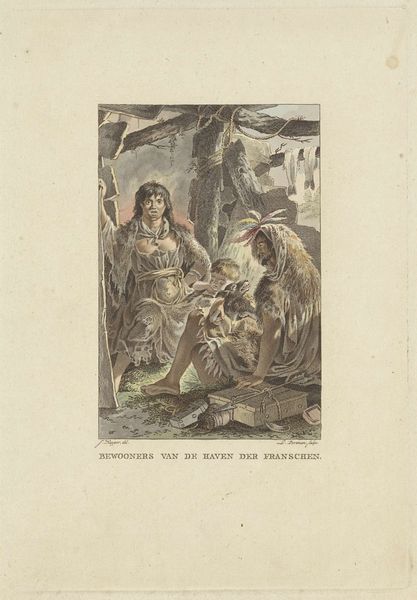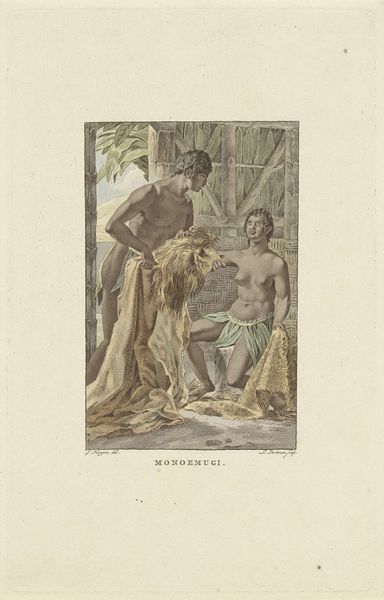
print, engraving
#
african-art
#
narrative-art
# print
#
figuration
#
romanticism
#
genre-painting
#
engraving
Dimensions: height 242 mm, width 158 mm
Copyright: Rijks Museum: Open Domain
Curator: Editor: Okay, next up we have "Residents of West Africa," or "Bewoners van westelijk Afrika" by Ludwig Gottlieb Portman, dating back to 1807. It’s an engraving and print. It almost feels like we’re seeing a staged scene, like from a play, yet they’re outdoors seemingly experiencing the elements. What strikes you about this piece? Curator: The method of production immediately jumps out. An engraving of this kind signals a reproductive technology, doesn't it? This image was made to be disseminated. The materials, the paper and ink, would have been relatively inexpensive, and the process repeatable, speaking to a desire to broadly circulate this particular depiction of West Africans. What social context produced a demand for these types of images, do you think? Editor: I hadn't really thought about the production in terms of its colonial context. I guess, beyond just satisfying some desire for exoticism, there's an element of control inherent in depicting and then widely distributing images of people. Curator: Exactly. And think about the labour involved. Who engraved this plate? What were their own cultural biases, or lack of understanding of West African culture, and how might those be imprinted upon the image itself, irrespective of Portman's original sketches or intentions? Is it an accurate depiction, or is the "accuracy" performative and complicit? Consider the figures themselves: how are they adorned? What materials are employed, and by whom, in the creation and acquisition of these adornments? It opens up many material and economic considerations. Editor: It really does shift my perception. Instead of just viewing the artwork as a finished product, now I see a layered history of materials, labor, and even social control embedded within the image itself. I never considered Romanticism in that light, it helps frame a fresh discussion around print culture and its role in shaping and solidifying those colonial perceptions. Curator: Precisely! It's about moving beyond the surface to understand the complex material conditions that underpin what we see.
Comments
No comments
Be the first to comment and join the conversation on the ultimate creative platform.
